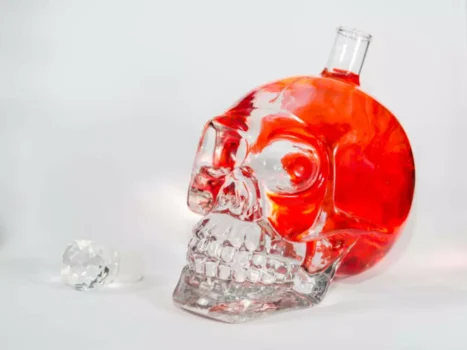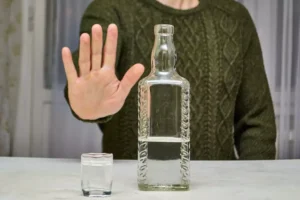
The presence of this -OH group allows the alcohols to form hydrogen bonds with their neighbouring atoms. Alcohols are differentiated based upon the presence of the hydroxyl group attached. The location of this hydroxyl group as well will change the physical and chemical properties of any alcohol. Alcohols are known to be one among most of the commonly occurring organic compounds. These alcohols are considered to be as the derivatives of water where one among the hydrogen atoms are replaced by alkyl group, which is typically represented by the letter R in an organic structure. Explore Mayo Clinic studies testing new treatments, interventions and tests as a means to prevent, detect, treat or manage this condition.

Alcohol Use Disorder (AUD)

Psychological, genetic, and behavioral factors can all contribute to having the disease. A health care provider might ask the following questions to assess a person’s symptoms. Symptoms of alcohol use disorder are based on the behaviors and physical outcomes that occur as a result of alcohol addiction. If your pattern of drinking results in repeated significant distress and problems functioning in your daily life, you likely have alcohol use disorder. However, even a mild disorder can escalate and lead to serious problems, so early treatment is important. Unhealthy alcohol use includes any alcohol use that puts your health or safety at risk or causes other alcohol-related problems.
- Ideally, health care providers will one day be able to identify which AUD treatment is most effective for each person.
- Another would be a college student who repeatedly has trouble making it to class because she was drunk the night before.
- Binge drinking is when you drink enough alcohol to raise your blood alcohol content (BAC) to 0.08% or higher.
- Research in animals shows that having more self-determination and control over one’s environment can help facilitate adaptive brain changes after ending substance use.
- The diagnosis of AUD is established using the criteria in the DSM-V.
When should I see my healthcare provider?
Also known as “alcohol counseling,” behavioral treatments involve working with a health care provider to identify and help change the behaviors that lead to alcohol problems. When healthcare providers screen for this condition, they look at drinking behavior patterns within the last year to determine a diagnosis. They use a set of 11 criteria established by the Diagnostic and Statistical Manual of Mental Disorders, Fifth Edition (DSM-5) to assess alcohol use severity. Treatment for alcoholism often involves a combination of therapy, medication, and support. If you think you might have an alcohol use disorder or if you are worried that your alcohol consumption has become problematic, it is important to talk to your doctor to discuss your treatment options. Alcohol use disorder is considered a progressive disease, meaning that the effects of drinking alcohol become increasingly more severe over time.
What Is Alcohol Use Disorder? Symptoms, Causes, Diagnosis, Treatment, and Prevention
In many organs, the effects of alcohol increase over time, and the damage becomes apparent only after years of abuse. As mentioned above, the DSM-5 says an AUD diagnosis requires at least 2 of the 11 symptoms of https://ecosoberhouse.com/ listed above to have occurred within the previous 12 months. According to the National Institute on Alcohol Abuse & Alcoholism (NIAAA), women who have no more than 3 drinks on a given day and no more than 7 per week are at low-risk for developing AUD. Alcohol use disorder (AUD) is a chronic, relapsing disease that is diagnosed based on an individual meeting certain criteria outlined by the Diagnostic and Statistical Manual of Mental Disorders (DSM-5). The pathway to healing and recovery is often a process that occurs over many years.
Thus, the reactivity of phenols is different from normal alcohols, allowing them to participate in reactions that normal alcohols typically don’t. It is for this reason that we will not spend too much focus on phenols in this article. Alcohols are compounds with a hydroxyl group (OH group) bonded to an sp3 hybridized carbon atom. That is, the carbon with the OH bonds to three other things that are either hydrogen atoms, alkyl groups, or both. This makes alcohol different from carboxylic acid, another common hydroxyl-containing functional group because, in carboxylic acids, the carbon with the OH double bonds to another oxygen atom. Tertiary alcohols feature a hydroxyl group attached to the carbon atom, which is connected to 3- alkyl groups.

Be open with others about what you’re experiencing so they can support you as you work to become sober. If you have it, you regularly drink heavy amounts of alcohol despite its negative effect on your life, health, and the people around you. Contact your primary care provider, health insurance plan, local health department, or employee assistance program for information about specialty treatment. Caring for a person who has problems with alcohol can be very stressful. It is important that as you try to help your loved one, you also find a way to take care of yourself. It may help to seek support from others, including friends, family, community, and support groups.
- The two manuals use similar but not identical nomenclature to classify alcohol problems.
- Alcohol use disorder typically develops gradually over time.
- The fact that not every person who drinks alcohol will necessarily experience a loss of control and progression to addiction indicates that AUD is not solely driven by exposure to alcohol.
- If you’re receiving counseling, ask your provider about handling high-stress situations when you may feel like you need some additional mental health support.
- You have many options to choose from, including Alcoholics Anonymous (AA).
The diagnosis of AUD is established using the criteria in the DSM-V. Two or more criteria indicate mild AUD, 4 to 5 indicate moderate AUD and 6 or more criteria are consistent with severe AUD. The 2 criteria to make the diagnosis center around the patient experiencing withdrawal symptoms when not drinking alcohol and tolerance or requiring an increasing amount of alcohol to achieve the same effect. When seeking professional help, it is important that you feel respected and understood and that you trust the person, group, or organization to help you.
We usually experience setbacks along the way, learn from them, and then keep going. You may be able to better compare your options by assessing whether and how the program or provider measures success. Acceptance- and mindfulness-based interventions increase awareness and acceptance of present-moment experiences. Mindfulness-based skill-building strategies promote flexible, rather than autopilot, responses to triggers that can prompt drinking.
